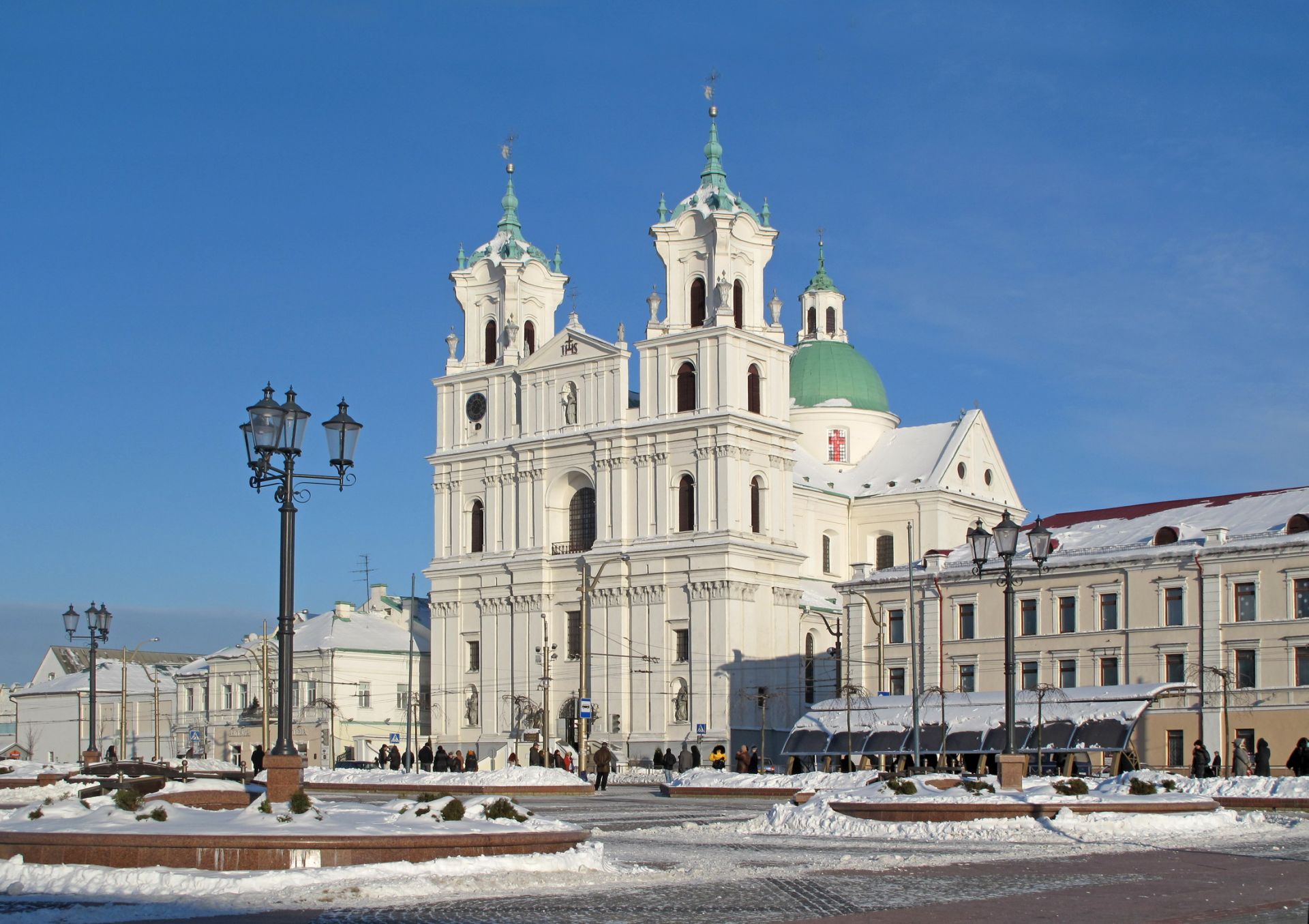All content and media files are published under a Creative Commons Attribution-ShareAlike 4.0 International License (CC BY-SA 4.0)
The westernmost city in Belarus, Grodno, boasts the majestic Cathedral of St. Francis Xavier, or the Farny Church (the name of the city's Catholic community center in Belarus).
The cathedral was built in 1683 as a part of the monastery complex of the Jesuit order. Its construction lasted 27 years. Moreover, it took more than two decades before it was consecrated in honor of the holy Catholic missionary and one of the founders of the order, Francis Xavier (canonized in 1619). Its solemn consecration was visited by Polish King Augustus II the Strong and Russian Emperor Peter the Great. Later, the order had got an entire quarter, where a monastery, a college, a library, and a pharmacy were built. By the way, the latter still functions today.
The cathedral is an outstanding architectural monument of the Baroque style which was popular in the 17th-18th centuries. The three-nave basilica has 65-meter-high towers, one of which keeps one of the oldest clocks in Europe. According to some sources, this pendulum clock is over 600 years old, so it is older than the most famous clock in Prague. Another difference between the Belarusian and Prague clocks is the old working mechanism: the Czechs have long replaced it with a modern one. Initially, the temple had bells cast in 1665. But they were taken to Germany during World War I. The modern bells were installed in 1938.
The interior of the cathedral includes 13 altars. Made of wood in 1736 by Polish master Jan Smith, the main altar is the highest in Europe (21 meters high). It is decorated with more than 40 sculptures of the apostles and saints, which are wooden but look like marble.
The jewel of the Cathedral of St. Francis Xavier is the priceless miraculous icon of Our Lady of the Congregation, which was gifted to the temple by Pope Urban VIII in 1641.
